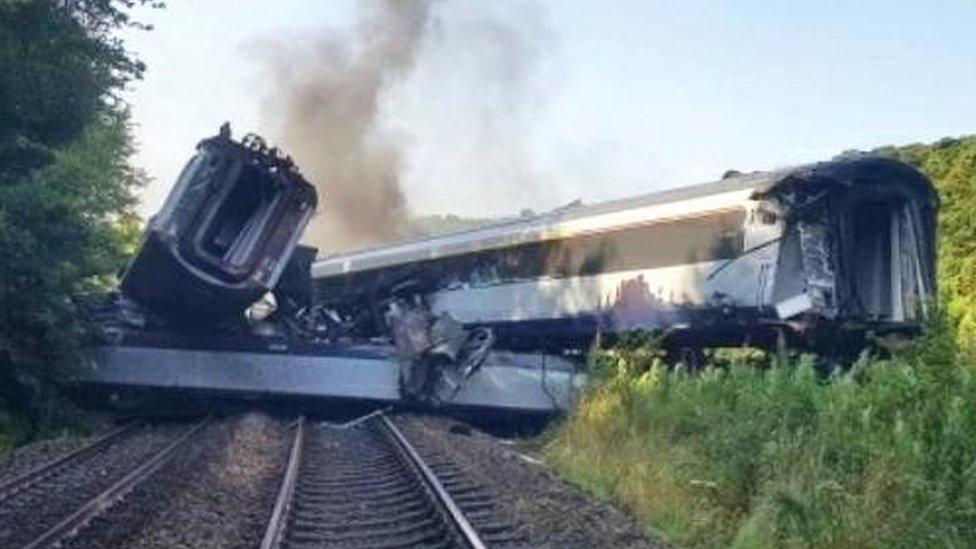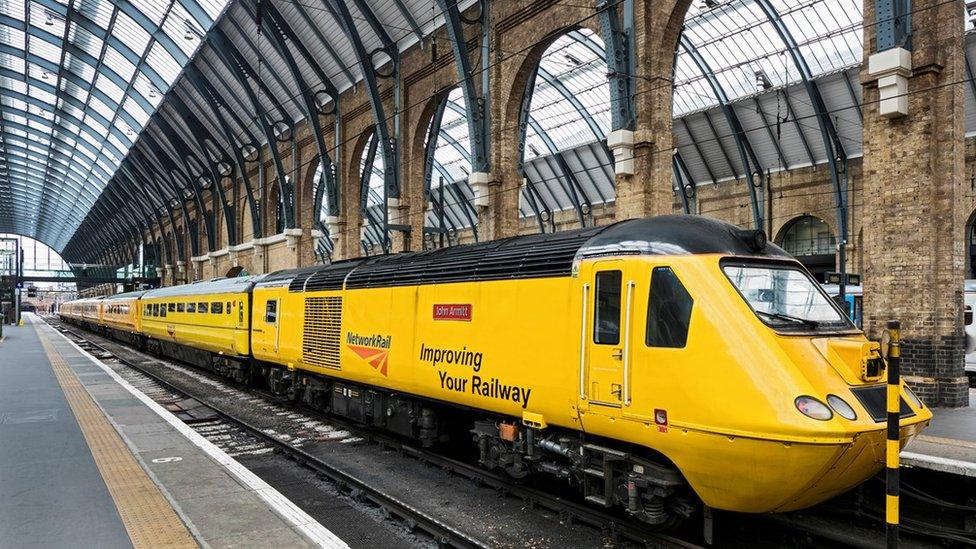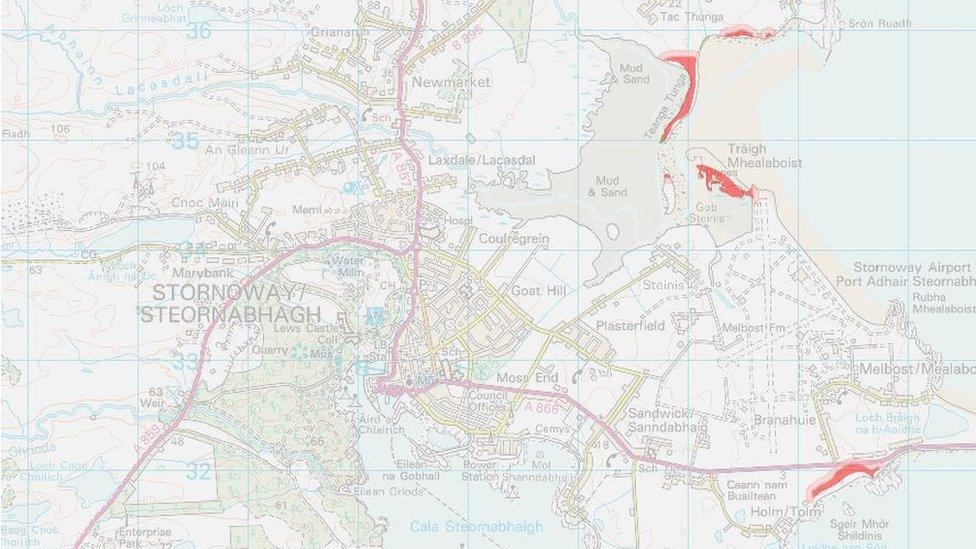Are we doing enough to modernise infrastructure with a changing climate?
- Published

Three people died after a ScotRail train from Aberdeen to Glasgow left the rails in Aberdeenshire on Wednesday morning
It's already clear that torrential rain played a significant part in the first fatal derailment in the UK since 2007.
Scotland's Transport Minister Michael Matheson has confirmed the conditions were a factor and Network Rail footage shows there were landslides in the area.
The climate is changing and scientists agree it's very different to when the railways were built by our Victorian ancestors.
Though landslips are not uncommon, particularly in that area around Stonehaven, climate change means they are happening much more frequently as the land struggles to cope with the volume of water.
Just two years ago a passenger train hit a landslide on the West Highland line near Glenfinnan.
Fortunately, in that crash no-one was hurt.
There are questions over how we can modernise the railway and strengthen its resilience.
So are we doing enough?
Rail engineering consultant Gareth Dennis told BBC Scotland: "More could always be done. You're looking at investment in new technology to manage and monitor assets remotely which means a better use of resources.
"Ultimately the pressures aren't really financial, they are about human resources; the number of skilled people we have to maintain this infrastructure."
The main line of defence just now are yellow trains, nicknamed the Flying Bananas, which run over every stretch of the network about once every two weeks.

These flying bananas examine the condition of the tracks
They are called New Measurement Trains , externaland cameras film the track at speeds of up to 125mph while computers on board carry out hundreds of checks a second.
But the breaches can come suddenly, particularly with freak storms.
A fifth of our coastline at risk
That happened at Dawlish on the coast of Devon in 2014 when the sea washed away an embankment leaving rails and sleepers hanging in the air.
Much of Scotland's infrastructure is ravaged by the sea too and that's a concern.
Prof Jim Hansom, from Glasgow University, runs the Dynamic Coast project on behalf of the Scottish government.

The project drew up predictions of areas potentially at risk from erosion
It has already identified that a fifth of our coastline is at risk from coastal erosion, threatening assets and infrastructure worth hundreds of millions of pounds.
He explained: "That's where adaptation comes into place, beginning to think more clearly and sensibly about how we might use our coastal land, not developing on low lying coastal land that's subject to coastal erosion and coastal flooding risk.
"Of course all those caveats extend inland as well to river basins, to slopes that are traversed by infrastructure."
It's not just the rails that are susceptible with the A83 in Argyll closed by a landslip again last week at the Rest and Be Thankful.
Even our 200 year old canals are struggling with climate change with a breach on the Union Canal this week near Polmont., leaving a 30 metre-wide hole.
Part of the canal's embankment near Polmont was washed away during severe weather
Scientist professor Pete Smith, from Aberdeen University, said: "As the climate warms we get more energy in the system and that energy is going to cause more extreme and more intense events of this sort.
"It's going to get worse so where we're seeing extreme heat events, for example in the south of England with intolerable temperatures, that could become the norm."
So what are politicians to do?
Former Scottish transport minister Stewart Stevenson said: "This isn't easy. We're going to have to choose our early targets and make those investments in those places before we attempt to upgrade the whole of the Victorian infrastructure."
UK Transport Secretary Grant Shapps has ordered an urgent review into the risk of landslips across the rail network.
But it's clear there's no easy or cheap fix to future-proofing our infrastructure.
And that means difficult decisions ahead.